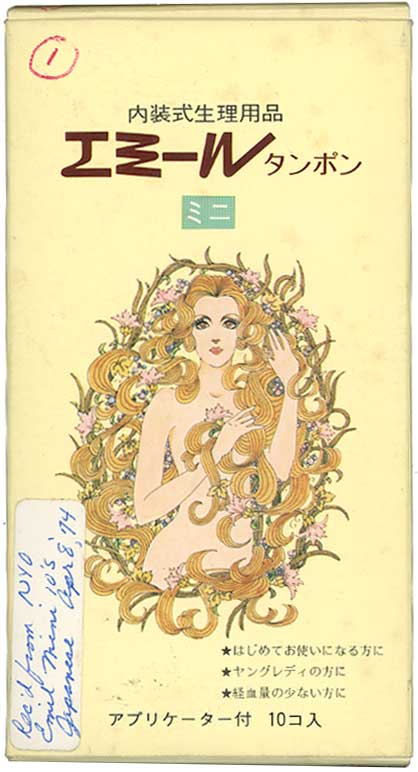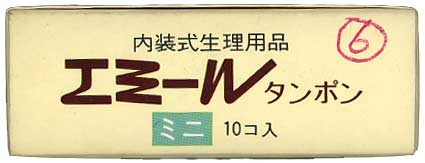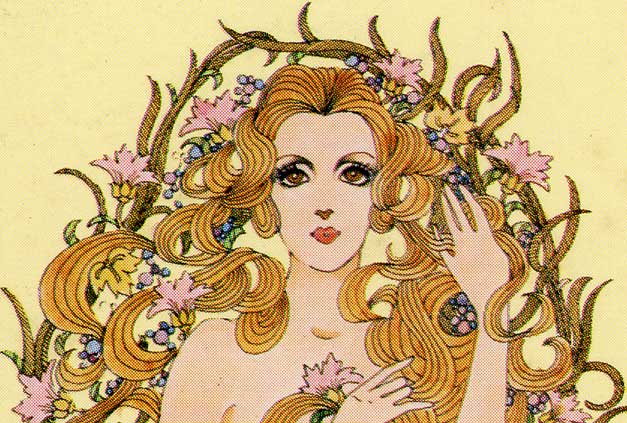Some Asian menstrual
products:
Japan:
"Origami" tampon: Anshin (Japan, 1977)
Tampons, box, directions. Origami
applicator. (Tambrands gift, 1997) It's
the same as Ortex Gold
and Cameo
tampons.
Cellopon (Japan,
1968) Box, instructions, tampons. No
applicator. With a discussion of the mutual influence of
European and Japanese
art & an example from Van Gogh.
Elldy (Japan)
tampon with finger
cots, box - ad
in Junie magazine (October 1996).
Shampon Young
stick tampon (Japan, 1977)
Japanese pads and belts,
early 20th century: instructions
for making the so-called uma (pony or
horse, because it resembled in function the
device on horses to catch feces).
Ads for Japanese commercial menstrual
belts from the
early 20th century with a comparison with
the English source of the drawing: Aubrey
Beardsley, England's best artist (just my
opinion).
Early 20th
century ads
for Japanese menstrual belts, pads & underpants with some translation.
Thailand:
Thai magazine ad,
date?
China:
Chinese
pad and belt (2000)
Chinese pad, Anerle
Chinese panty pad, Huitlao
India:
Washable menstrual pads for women in
Almora, Uttar Pradesh
state, India,
giving them more freedom (1999).
Teaching girls in rural southern Rajasthan
about puberty, menstruation and how to make
washable menstrual pads.
More
recent information about menstrual
management in India with an article critical of this
museum.
Some tampon
curiosities: L & F [Lehn & Fink]
Improved Tampons (U.S.A.,
1930s-1940s?) Box,
instructions, some tampons. From the
company that made Lysol.
- Medical tampons mentioned
in newspapers, U.S.A., 1894-1921 - o.b. folder, Germany,
early 1950s (tells
what o.b. means!)


|

MUSEUM OF MENSTRUATION AND WOMEN'S
HEALTH
Emil menstrual tampons,
Japan, 1974
Emil tampon looks very much like
the Tampax
of the time: cardboard tubes &
cotton plug (the absorbing part),
just like the near contemporary
British St
Michael tampon. All three
avoided plastic
delivery tubes and
super-absorbent material unlike
the ill-starred Rely that
appeared just a few years later.
But EMIL - sounds very un-Japanese
to me and male.
This could be the Japanese version
of a Western tampon.
The Japanese have developed or
marketed interesting tampons,
including one with cots to
protect the fingers.
My knowledge of the Japanese
language is primitive but I've
tried to point out some
interesting aspects of Emil. But
read some Japanese
words
and euphemisms associated
with menstruation.
Tampon
directory. Related products
in the column at left.
I thank
the former Tambrands, once maker
of Tampax tampons, for donating
this box!
|
Below:
Someone at Tambrands,
which donated the box, annotated and
numbered the sides. The
numbers might have linked to a
translation or to an explanation.
My translation
of the top three lines
(no, I didn't cheat by looking
at the box at right - really!):
Internal--use
menstrual product
[American tampons have said this
since the
beginning - and here]
Emil
tampon
Mini
The characters in the little green box,
third row from the top, are a
phonetic rendition of "mini" in
the characters Japanese uses for
foreign words (katakana), not a
translation of the meaning of the
English word (see box at right).
For example, the Japanese could
have placed the Japanese character
for small instead. It's possible
Japanese buyers would have known
what mini meant.
The large
brown characters in the
second line are distorted versions
of the katakana characters that
spell Emil, thus attesting to the
foreignness of that word. Which
strengthens the argument for a
European originator. And the katakana
phonetic version of tampon
suggests that the Japanese have no
native word for tampon and
possibly, historically, didn't use
them.
Read more about the woman and her
hair at the bottom of
this page.
|
Below:
Sanitary,
of course, is an added-value
euphemism for "menstrual,"
added value in the sense that it
tells buyers that it's clean as
well as for menstruation. That's
long been the usage in America,
the land of prudery.
"Pieces,"
as in "10
pieces," probably
demonstrates the Japanese use of counters,
words like head
of cattle
in English; Americans don't
usually say "ten cattle." Japanese
uses many more different such
words and much more often than
English and they form one of the
many difficulties of the language.
It might mean that a Japanese
translated the text into English.
Germans would also say piece(s),
Stück - zehn Stück.
So, you ask, what do the two
characters right after the "10" on
side 1 (at left) exactly
mean? Phonetically, they could be
ko-iri or something similar; the
backwards C sounds like KO (it's
katakana and means nothing in
itself) and the second character
could sound like iri - it means
"put in" - aha! My list of
Japanese counters lacks this one -
maybe it's specific for tampons! -
as does my huge Japanese
dictionary. "Put-in
things" might be a good
guess.
I hope I didn't waste your
evening with this.
|
 |
 |
Below:
Side 4, the second box below,
bears notations in a different hand
than those on
side 1, above, and an earlier date
- assuming that it means March 5,
not May 3 as it would
in the sane system used in most of
the world - sorry, fellow
Americans. BUT the
handwriting below resembles a non-American
script - German, for
example.
So it might stem from a Japanese.
|
 |
 |
Below, left
& right: the
ends.
|
|
The
ends are identical.
|
 |
|
Below:
Is she having a bad hair day?
(And it does remind me of a
shampoo label.)
The design seems typical of the
70s: colorful, intricate, twisted
- compare Peter Max's posters.
However, those spiky things
on the outside - brambles? snakes
à la Medusa? - spook me.
But the larger question is: Why use a woman
with blonde hair and
non-Japanese eyes?
Japanese women seem to greatly
prefer pads
over tampons (Americans do too but
not by as much) and the design
could identify this as a Western
product. The manufacturer could
have also been Western as with Anshin
tampons. But sometimes
Japanese use Western language and
characteristics to add pizzazz.
See another Western image, this
one based on a famous artist,
on a Japanese menstrual product.
|
 |
NEXT |
instructions: overview
1 2 3 4 - the tampon
© 2009 Harry Finley. It is illegal to
reproduce or distribute any of the work on
this Web site
in any manner or medium without written
permission of the author. Please report
suspected
violations to hfinley@mum.org\
|